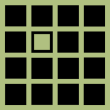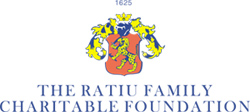UCL School of Slavonic and East European Studies, University College London, 7th Annual International Postgraduate Conference
Inclusion Exclusion
Friday 17 February 10:00 – 11:30: Panel D2: Rewritten and Remembered History
Andreas Hemming (Karl Franzens University Graz): ‘"Imaging" the Balkans: on photography in Albania’
In this paper I will to present a project on the analysis of the role of photography and photographic images on perception and above all self-perception in contemporary Albania.
Historically, photography in Albania has been - with one notable exception, namely that of Pjeter Marubi - the domain of foreign travellers, be they diplomats, adventurers or scholars. Needless to say that photography is an element of what has come to be known as Orientalism (Said) or Balkanism (Todorova). While these latter concepts speak only of how the West constructs the rest, they blend out how those being constructed go about dealing with their being constructed. In the concrete case, the question is one of how Albanians deal with visual images, both historical and contemporary, of Albania and Albanians?
This question of particular interest, since the Albanian population is for the first time in a position to define their identity as an ethnic group for themselves, without interference/influence of either a foreign power or of dominating central state structure. Albanian dentity is being redefined and realigned. Where once the bounds of identity were well defined because they were determined unilaterally from above, they are now open for debate – and they are being debated.
Part of this debate involves the (re)evaluation and (re)interpretation of the past, both recent and more ancient as fixed in photographic documents. This photographic heritage reveals on the one hand a past of shepherds and farmers, primarily men and boys, dressed in ragged "traditional" attire posing in front of houses and mountains, underlining the roughness of the environment and the independent nature of its residents. On the other hand - and more difficult to interpret, both for the native Albanian as well as the scholar - are the brightly coloured visual images of the "leaps and bounds" taken by the Communist regime in the second half of the 20th century. Whereas very few living Albanians have personal memories of the pre-Communist era; a great many are in a position to differentiate between the ideal and the reality of the Communist utopia, as presented in the photography of the period. In both cases the question is one of what is (typical) Albanian – and what is not.




